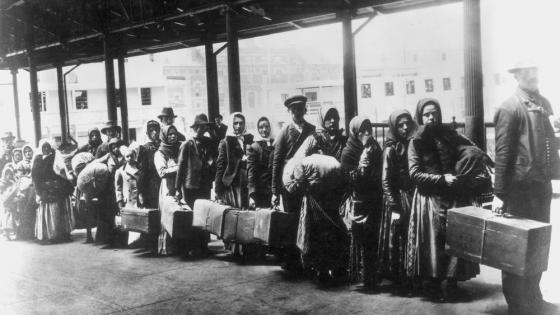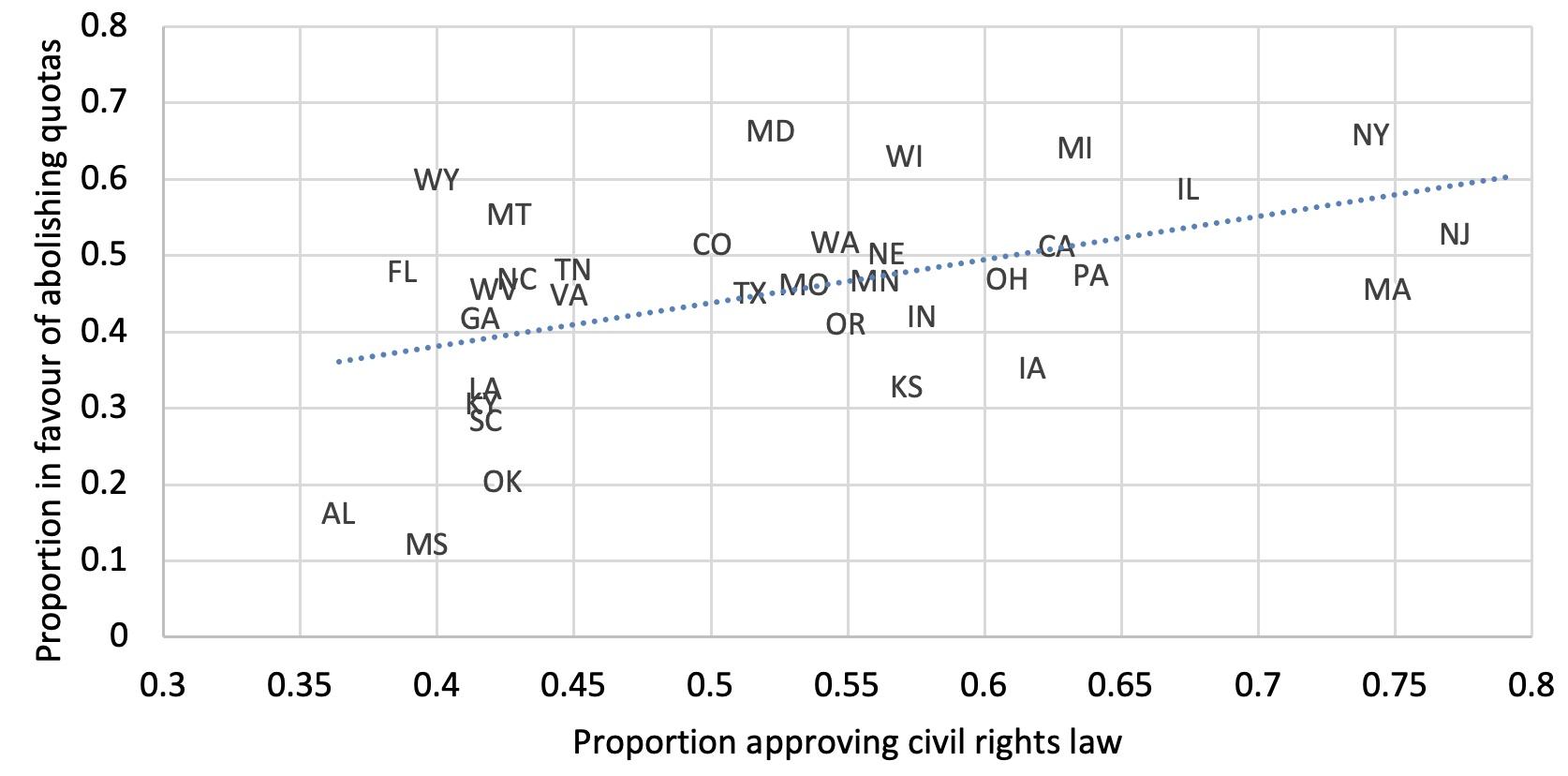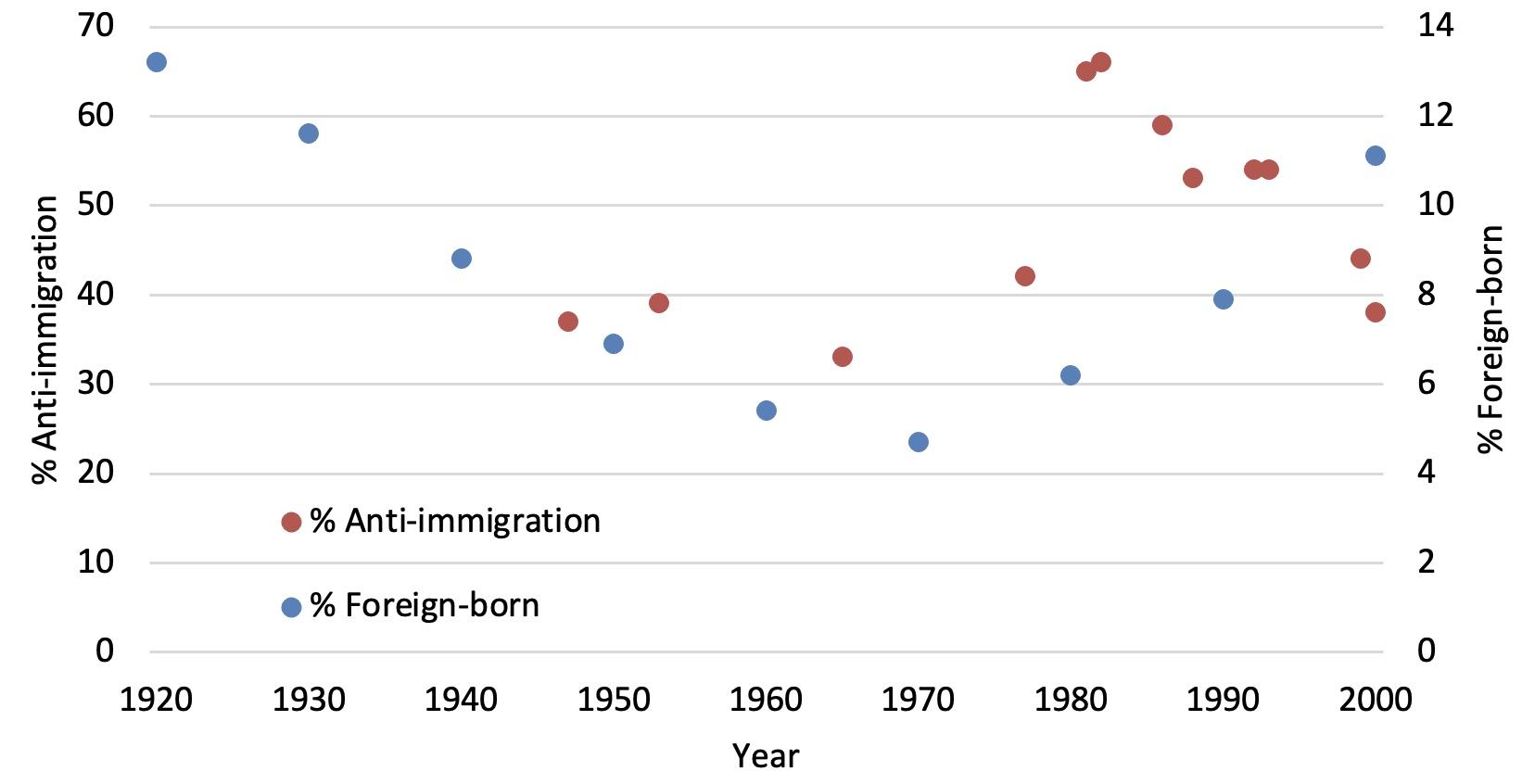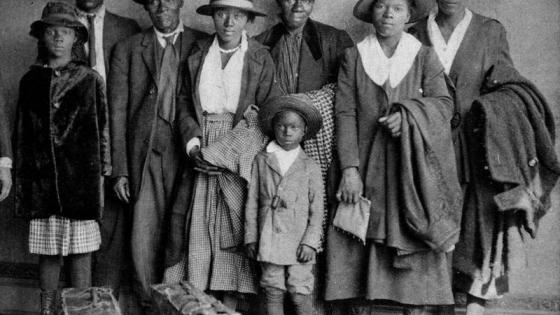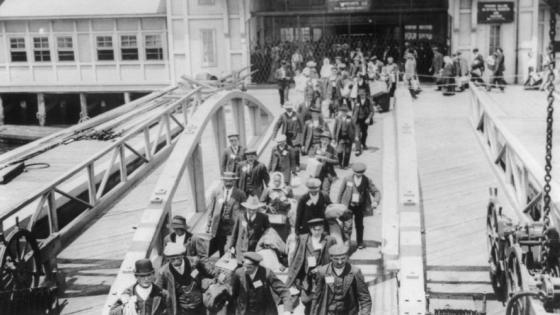The 1965 Immigration Act is widely seen as a watershed in US immigration policy. It abolished the country-of-origin quotas, which had been in place since the early 1920s and which favoured immigrants from the UK, Germany, and Ireland, while severely limiting immigration from elsewhere in the Eastern Hemisphere. It is often credited with leading to massive changes in the volume and composition of foreign arrivals. In just two decades, total immigration almost doubled, from an annual average of 290,000 in 1961-5 to 573,000 in 1981-5, while the share coming from Europe fell from 42% to 11%.
Many observers have perceived these as unintended consequences. According to one historian: “it is doubtful if any drafter or supporter of the 1965 Act envisaged this result” (Daniels 2002: 341). That raises the question of exactly what did inform the votes in Congress, which, by a substantial majority, supported the reform (Conconi et al. 2013). Some see it as the result of political machinations that took place ‘inside the beltway’ on a piece of unpopular legislation (Graham 1998: 56, Marinari 2014: 24). The implication is that not only did the reform have unintended consequences but, at the time it was enacted, it also lacked public support.
Public opinion in 1965
To address these issues, in a recent paper (Facchini et al. 2021) we examine a unique nationwide Gallup poll that was taken a few months before the key debates in Congress. One third of respondents wanted to see immigration decreased, while 45% wanted to see it increased or kept constant. Thus, in 1965 anti-immigrant sentiment was lower than before or since. More notably, there was strong support for abolishing the national origins system, with just over half in favour and less than a third opposed. This sentiment is sometimes attributed to the change in attitudes towards racial discrimination that led to the landmark Civil Rights Act of 1964 (DeLaet 2000: 24).
How, if at all, did the votes in Congress reflect popular sentiment in the districts and states that its members represented? In order to answer this question, we exploit multilevel regressions with post-stratification (MRP), a methodology commonly used in political science to produce reliable state-level estimates of public opinion from a single survey (Kastellec et al. 2019). We then study the determinants of voting behaviour among members of Congress, considering both public opinion variables as well as district and individual representative characteristics.
The first House vote on the bill took place on 25 August 1965 and it was carried by a majority of 318 in favour to 95 against. Our estimates reveal a striking result. Voting for the bill was strongly and positively associated with state-level public opinion in favour of abolishing the country-of-origin quotas. This result holds even after accounting for the characteristics of the congressional district and of the individual representative (including party affiliation). In contrast, there is no correlation at all with public opinion on decreasing immigration, both when the specification includes it in isolation and together with other controls.
The second House vote (the final vote, on the conference report) took place on 30 September and was carried by a majority of 320 in favour and 70 against. This version of the bill had been amended in the Senate to add a numerical cap on immigration from the Western Hemisphere, which had previously been unrestricted. We find that voting was still strongly associated with opinion on abolishing the quotas. But there is some evidence that, when district and representative characteristics are accounted for, voting in favour of the bill was positively associated with the proportion who wished to see the volume of immigration reduced.
Links with civil rights
These results raise two further questions. First, was opinion on abolishing the quotas linked to attitudes towards the preceding civil rights reform, which after all, was the defining domestic policy issue of the 1960s (Calderon et al. 2021)? In order to answer this question, we turn to another survey, taken in 1964, shortly after the approval of the landmark Civil Rights Act. In this survey, 58% of respondents stated that they were in favour of the Civil Rights Act. Figure 1 shows the correspondence across states between this measure and share of individuals in the 1965 survey who wished to see the country-of-origin quotas abolished. There is a clear positive correlation (0.48) but with some notable deviations – in particular, among Southern states.
Figure 1 State-level opinion on abolishing the quotas and approval of civil rights legislation (predicted values)
Notes: MRP predictions of the proportion of survey respondents who approved of the 1964 Civil Rights Act and the proportion who supported the abolition of the country of origin immigration quotas. The labels are the two-digit state codes.
Does the association between congressional votes on immigration and public opinion on abolishing the quotas simply reflect attitudes towards civil rights? To assess whether this is the case, we run a set of additional models to explain congressional support for 1965 Immigration and Naturalization Act. In particular, in our baseline specification we additionally control for the (predicted) share of support for the Civil Rights Act. We find that voters’ support for the Civil Rights Act is positively correlated with congressional support for immigration reform in the first House vote, but not the second. This is consistent with greater emphasis on eliminating discrimination in the first debate than in the second. Riding initially on the coat-tails of civil rights reform, the immigration debate then took on a life of its own.
Immigrant numbers
The second question raised by our analysis is: Why did the congressional voting pattern not correspond with public opinion on reducing immigrant numbers? As noted previously, anti-immigration sentiment was at an all-time low, which, as Figure 2 shows, coincided also with the lowest proportion of immigrants in the US population in the twentieth century (Tabellini 2019). And, with strong economic growth and low unemployment, its salience was muted (Hatton 2017). Even so, forward-looking representatives might have worried that they were opening the door to large numbers of immigrants from unfamiliar origins. So why didn’t such concerns influence their voting behaviour?
Figure 2 Anti-immigration opinion and percent foreign-born
Sources: Anti-immigration opinion: percent responding ‘fewer’ or ‘decrease’ in Gallup polls (left scale), from Simon and Lynch (2003) p. 47. Percent of population foreign-born (right scale) from Gibson and Jung (2006), Table 1.
To some extent, concerns were allayed by the fact that the final version of the bill included – for the first time – a cap on immigration from the Western Hemisphere and that refugees, not previously included in the numerical ceiling, now came under it. Also, four-fifths of the Eastern Hemisphere visas would be for family reunification, so it was expected that the origin-country composition of future immigrants would resemble that of the existing immigrant stock. But perhaps more important, much of the ex-post increase in immigration in the subsequent decades was not due to the 1965 Act at all, but to later legislation and to admissions outside the numerical ceiling, which could not have been easily anticipated at the time.
Bottom line
The 1965 Immigration Act is an iconic landmark that, according to some observers, had “an impact on American society as deep as the initially more acclaimed civil rights laws of the decade” (Alba and Nee 2003: 174). A large literature has focused on the political process ‘within the beltway’ that brought it about, with little regard for the links between the votes of representatives in Congress and the attitudes of their grass-roots constituents. We find that voting patterns were consistent with public opinion on abolishing the country-of-origin quotas but not with opinion on the number of immigrants. While the former initially reflected attitudes over civil rights, the latter is partly explained by the fact that the reform was conceived at the time as likely to produce only a modest expansion in the numbers.
References
Alba, R D and V Nee (2003), Remaking the American Mainstream: Assimilation and Contemporary Immigration, Cambridge, MA: Harvard University Press.
Conconi, P, G Facchini, M Steinhardt and M and Zanardi (2013), “US votes on trade and migration,” VoxEU.org, 7 January.
Calderon, A, V Fouka and M Tabellini (2021), “Racial diversity and racial policy preferences: The Great Migration and civil rights,” VoxEU.org, 20 July.
Daniels, R (2002), Coming to America: A History of Immigration and Ethnicity in American Life (2nd Ed.), New York: Harper.
De Laet, D L (2000), U.S. Immigration Policy in an Age of Rights, Westport, CT: Praeger.
Facchini, G, T J Hatton and M F Steinhardt (2021), “Opening Heaven’s Door: Public Opinion and Congressional Votes on the 1965 Immigration Act,” CEPR Discussion Paper 16808.
Graham, O L (2004), Unguarded Gates: A History of America’s Immigration Crisis, Lanham, MD: Rowman and Littlefield.
Hatton, T J (2017), “Public attitudes to immigration: Salience matters,” VoxEU.org, 20 June.
Kastellec, J P, J R Lax and J H Phillips (2019), “Estimating State Public Opinion with Multi-level Regression and Post-stratification using R,” unpublished paper, Princeton University.
Marinari, M (2014), “Americans Must Show Justice in Immigration Policies Too”: The Passage of the 1965 Immigration Act,” Journal of Policy History 26(2): 219-245.
Tabellini, M (2019), “Gifts of the immigrants, woes of the natives: Lessons from the Age of Mass Migration,” VoxEU.org, 25 May.
